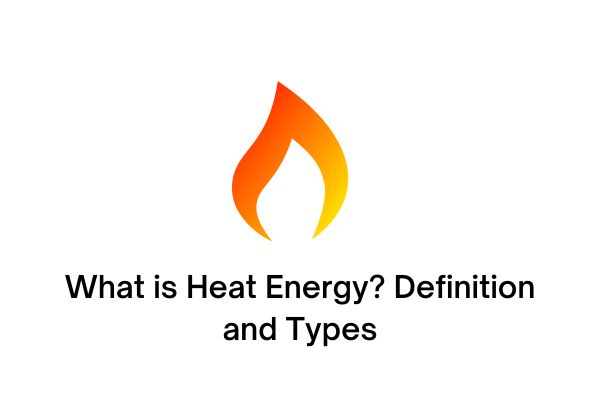In physics learning, the topic of heat is something that is often the subject of discussion. The simple definition of heat energy refers to the form of energy that can be absorbed or released by an object.
As is known, heat is not a substance. However, this heat is energy. However, for greater clarity, in this description an explanation will be given regarding the meaning of heat energy itself.
Apart from that, an explanation will also be given regarding the types of heat energy, as well as examples of heat energy. For this reason, here is the complete description:
Daftar Isi
What is Heat Energy?
Thermal energy, as a form of energy related to the temperature of an object, plays an important role in heat transfer between a system and its environment.
This is a phenomenon in which thermal energy is absorbed or released by an object, affecting the temperature or even the phase of the material in question.
This energy measurement can be done in calories or joules, depending on the measurement system used.
In contrast to heat energy, the concept of heat refers to the process of transferring heat energy itself through temperature differences between objects.
When heat is transferred, either from an object with a high temperature to an object with a low temperature, or vice versa, it effects a change in the thermal state of those objects.
The essential difference between the two can be seen in their respective definitions, highlighting how thermal energy is an intrinsic property of matter, while heat is a consequence of the transfer of thermal energy.
Types of Heat Energy
After knowing the meaning of heat energy, you also need to know that this heat energy consists of several types.
For this reason, in this explanation several types of heat energy will be given that can be identified:
1. Heat of Decomposition
Thermal decomposition refers to the amount of thermal energy required or released when a compound molecule is broken down into its individual elements.
Heat of decomposition is a term that refers to the thermal energy produced or required to break down one mole of a compound into different elements.
2. Heat of Formation
The formation of a compound from its elements requires or produces a certain amount of heat, which is known as the heat of formation.
The word heat of formation is the amount of heat involved in making 1 mole of a compound from its elements, which are often represented in gaseous form with their molecular formulas.
Some examples of compounds that show heat of formation are C12, Br2, O2, and H2.
3. Heat Neutralization
Heat of neutralization refers to the amount of heat involved in the formation of 1 mole of H2O from the interaction between an acid and a base.
This phenomenon is known as an exothermic reaction, which is characterized by an increase in temperature as a result of the chemical reaction that occurs.
4. Heat of Dissolution
Heat of decomposition refers to the total energy absorbed or released when a substance interacts with its solvent.
It reflects the magnitude of the energy change involved when 1 mole of a substance, originally in a solid state, changes to a solution state.
Example of Heat Energy
Heat energy has a significant role in daily activities, manifested in various situations that we encounter every day.
After knowing the meaning of heat energy and its types, below are several real examples where heat energy is applied in the context of everyday life:
1. Use of Fire
Heat energy produced from fire has become the main choice in many aspects of daily life, especially in the household context. The use of fire includes various activities such as cooking and burning.
2. Heating Using an Electric Stove
Heating materials by utilizing an electric stove device involves an energy transformation process, where electrical energy is converted into heat for heating purposes.
3. Friction of Two Objects
In the context of heat energy production, friction between two interacting objects is one of the main sources.
This process often occurs when using equipment or when pushing a pump, where thermal energy is produced as a side effect of the friction that occurs.
4. Sunlight
Natural heat energy provided by the sun is a vital source for the Earth.
In everyday life, we use it by sunbathing to feel the warmth of nature, while plants use it in the process of photosynthesis to support their lives.
That is the description related to the meaning of heat energy.
Where, this description has also been given regarding the types of heat energy and also examples in everyday.
Read Also:
